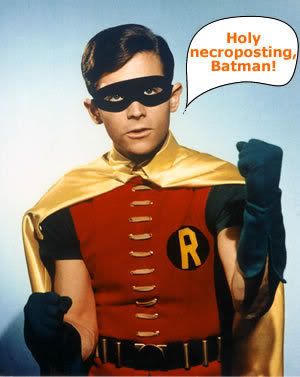shoefan
Senior Member
- Joined
- Jul 27, 2003
- Messages
- 853
- Reaction score
- 203
On my recent trip to London, I had the good fortune to spend a fair amount of time investigating the bespoke shoemaking trade, including spending two days with one of the country's finest "˜makers,' a day with an outstanding "˜closer,' some time with a lastmaker, and conversations with some others in the business, plus my visit to E Green in Northampton. Here are some of my observations about what I saw and heard. Overall State of the Bespoke Business I think the bespoke business in London is at significant risk of a decline in both business volume and quality. Regarding the former, the strength of the Pound relative to the Dollar is making bespoke shoes an even more expensive proposition for the American customer base that provides so much business to Lobb and Cleverley. Regarding the latter, many of the best people still in the business are getting a bit on in years and nearing retirement. For example, Terry Moore and Foster & Sons/Henry Maxwell and George Glasgow at Cleverley are either nearly retired or may well be soon. These are two gentlemen who are truly knowledgeable about all aspects of the shoemaking business, and thereby ensure the quality of the products that leave their workshops. The development of a next generation of people with their broad knowledge of the trade may well be absent. My impression is that Foster may soon be rate-limited in its ability to deliver new lasts as Mr. Moore continues to reduce his time in the trade. One criticism I heard of Lobb is that they lack a true shoemaker at the head of the company, and as such complaints regarding quality or fit may be met with indifference or ignorance as to what could be done differently/better. The training of craftsmen is also quite weak in London. Because the bespoke firms rely so much on outworkers, they seem to invest little in training people to become closers or makers. In the past, the Cordwainers College provided some of this training, but today the College is really all about design and industrial production, not about the bespoke craft. My impression is that business is varying quite dramatically across the different firms. From what I heard, Cleverley is doing well, largely because of their good fortune in getting named by the Robb Report as the best bespoke shoemaker (this was apparently a fairly serendipitous occurrence). Foster & Sons, not dependent on the American customer and with a loyal customer base, is steady, but the future without Terry Moore may be a challenge. Lobb is apparently quite slow; this may be a result of: their premium pricing; sometimes high-minded attitude toward customers; variable levels of customer service; debatable quality; or all of the above. THE SHOEMAKING CRAFT Having seen the "˜clicking/closing' and "˜making' of shoes, I was somewhat shocked at how (relatively) simple the "˜closing' is, and how difficult and time-consuming the "˜making' is. For the sake of reference, a closer can click and close a pair of uppers in as little as 1 hour (for a simple pattern), whereas the maker I visited took literally 18 hours to make a single pair of shoes. Going into my visits, I would have thought there was a lot more to the construction of the upper, but they are really pretty simple. Also, the availability of sewing machines, skiving machines, gimping attachments, etc. makes the "˜closing' a pretty straightforward (albeit skilled) process. On the other hand, the maker I visited used no automated tools whatsoever; what he did was probably no different from what a maker might have done 50 or 100 years ago. Here is how the 18 hours broke down (more or less): "¢\tPreparing the insoles/attaching them to the lasts/trimming to size: ¾ hour "¢\tCutting/skiving/hammering toe caps/toe puff & heel counters (from leather nearly ½ inch thick.): 1 hour "¢\tCutting/skiving welts: ¼ hour "¢\tSkiving feather/holdfast on insoles: ½ hour "¢\tLasting uppers (sequentially, the linings, the toe cap/toe puff, and the outer): 1 hour "¢\tPreparing and waxing linen thread/cord, and adding "bristles" for attaching welts: 1 hour "¢\tAttaching/sewing the welts: 2 ½ hours "¢\tTrimming the uppers: ¼ hour "¢\tAdding leather shank and cork filler: ½ hour "¢\tShaping/skiving shank and filler: ½ hour "¢\tPreparing and gluing on outsoles: ½ hour "¢\tPreparing and waxing linen thread/cord, and adding the "bristles" for outsoling: 1 hour "¢\tSewing on outsoles (with beveled waist): 2 hours "¢\tBuilding heels: 2 ½ hours "¢\tFiling/sanding/refining bottom of heel and sole: 1 hour "¢\tTrimming, skiving, and refining sole and heel edges: 1 ½ hours "¢\tStaining/waxing and burnishing the edges of the soles: ¾ hour "¢\tStaining/waxing and burnishing the bottom of the soles: ¾ hour In reviewing the breakdown of the maker's time, it is amazing how much time he spent on the heels and finishing the sole and sole edges. This guy is known for his attention to detail and quality, and it was readily apparent as he worked on the shoes; he repeatedly made certain that the shoes not only looked good, but also that they were as similar to each other as possible, given differences in the 2 lasts. I guess there are some makers who can "make" 4 or 5 pairs a week, but their quality is below that of the best, largely because of a lack of attention to detail. It was a pretty impressive experience to see a beautiful three-dimensional product emerge from such simple materials, through the application of lots of hard work and skill. I now have a much greater appreciation for what goes into a bespoke shoe, and I hope that the skills involved can survive, though I have my worries about that.


